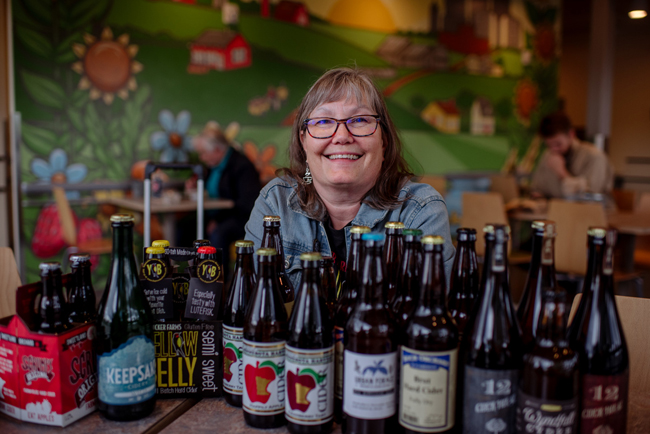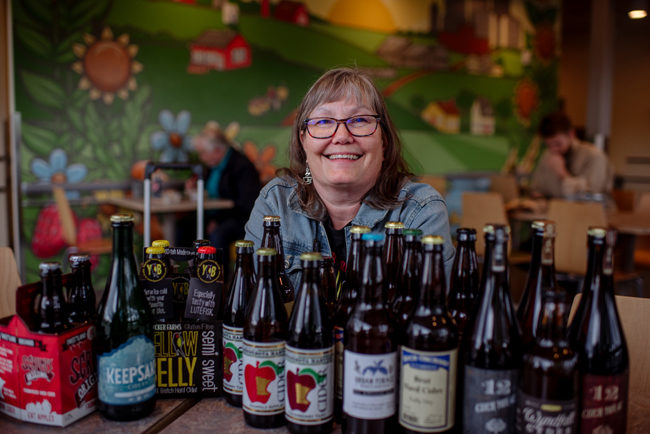
This story is a product of Heavy Table’s first Listening Session, underwritten and hosted by the Lakewinds Food Co-op. On May 23, we interviewed 15 local food artisans over the course of eight hours, with a goal of taking a snapshot of the vibrant Minnesota food scene.
The first apples of the year are starting to ripen, meaning that our tables will begin shifting from the joyful lightness of summer to the full-throated bounty of autumn. Part of that bounty is the halfway-between-beer-and-wine earthy sweetness of hard cider, a beverage now represented locally by the newly formed Minnesota Cider Guild.
We talked to the Minnesota Cider Guild’s secretary (and Sapsucker Farms owner), Debbie Morrison, in June, and she brought a box of her members’ products to share. The result: a quick snapshot of the state of local hard ciders, plus a slew of tasting notes.

HEAVY TABLE: What’s the state of the Minnesota cider industry right now?
DEBBIE MORRISON: The Minnesota cider industry is very young. All of us have been around five years or less. As time has gone on, we’ve realized that there are a lot of benefits that we can have by working together to build recognition for Minnesota cider. Right now there are only 17 cider makers in Minnesota.
HEAVY TABLE: There’s been a real boom of cider in Minnesota over the past few years. What’s driving it?
MORRISON: As you know, The University of Minnesota has done a lot of development of apples. That’s a key factor for why Minnesota is such as great place to make cider. Up in my area, which is east-central Minnesota, we’re using apple growing as an economic development engine. It’s an economically challenged area that used to be dairy farms. Now we have all these small family farms. We are now working with the local landowners to plant apple trees and get in on the growth of the Minnesota cider industry.
Minnesota apples are in huge demand not only because they’re great varieties that have been developed here, but because as cider markers, we’re required to have 51 percent of our juice come from Minnesota products. There are 75 farm-wineries in Minnesota, and about 16 of them are cider makers. You can see we’re a small part of a small industry.
HEAVY TABLE: What are the roots of craft cider in this country?
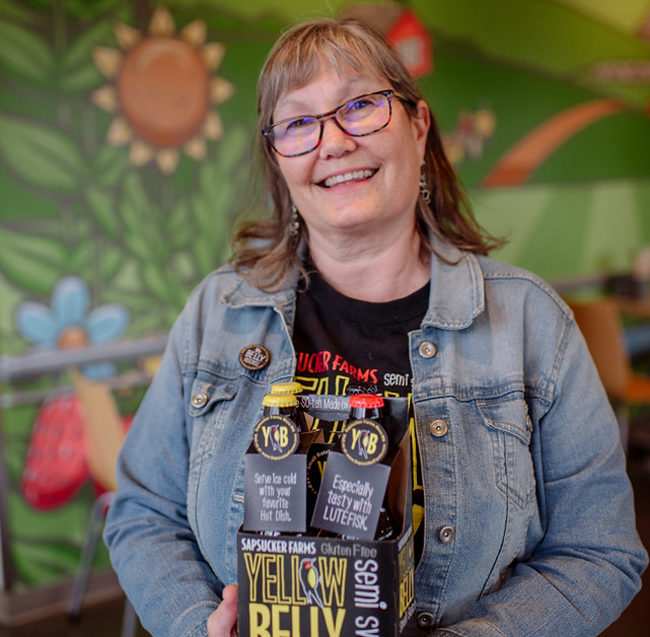
MORRISON: The roots go back to traditional cider apples that come from the British Isles — 50 percent of the world’s cider is consumed in the British Isles. They started with bitter apples, which are used to make the very dry, heritage cider there. We’ve heard of Johnny Appleseed, and there’s this picture of this barefooted hippie scattering apple seeds, but that’s not what he was. He was an entrepreneur who started orchards for the purpose of making hard cider. They were these bitter apples, the cider apples.
And then along comes Prohibition, and we cut down all the orchards. And then most of the apples being grown in the U.S. were the dessert apples — the Red Delicious, and all that kind of stuff, and the ancient varieties disappeared. Cider was kind of forgotten. Now, with the whole craft beverage scene, people are recognizing what cider is. And we’re just at the beginning of this in Minnesota. Some of the other markets, in the West, are almost saturated with cider, but we’re at the beginning here.
A lot of people think of cider as [big brands such as] Angry Orchard, and they don’t like it. So people are starting to recognize that there are some good heritage ciders that aren’t so sweet. The obstacle we’re facing is that the big brands are so cheap. People see craft cider and say, “Oh, it’s expensive” — well, there’s a reason why. We’re using Minnesota apples, and we’re giving it love and attention that is far greater than the stuff that comes from concentrate.
HEAVY TABLE: Who makes up the consumer base that is driving the growth of local cider?
MORRISON: The millennials are uber-consumers of good quality stuff. Their dining experience is very important to them. Craft cider is really taking off, but there really aren’t the measurement vehicles because the industry is so young.
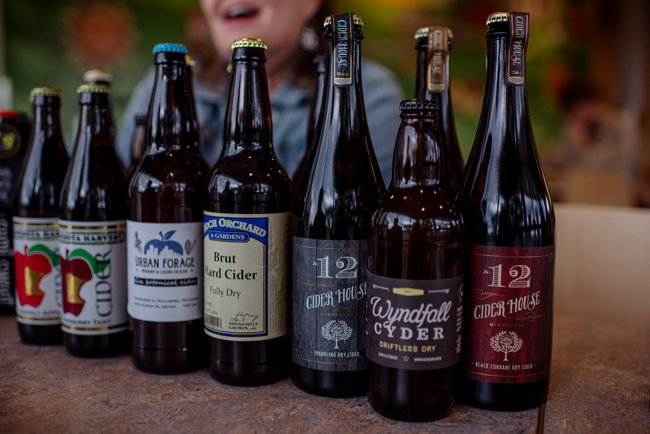
17 Ciders, Sampled
Our cider survey revealed a wide-ranging but promising snapshot of the Minnesota cider industry as it stands, with a full range including everything from overly sweet, mass market ciders to earthy, funky, wild ciders that would challenge even the most adventurous palates. In the middle of this mix: a number of nicely balanced, versatile beverages that would be at home on any table.
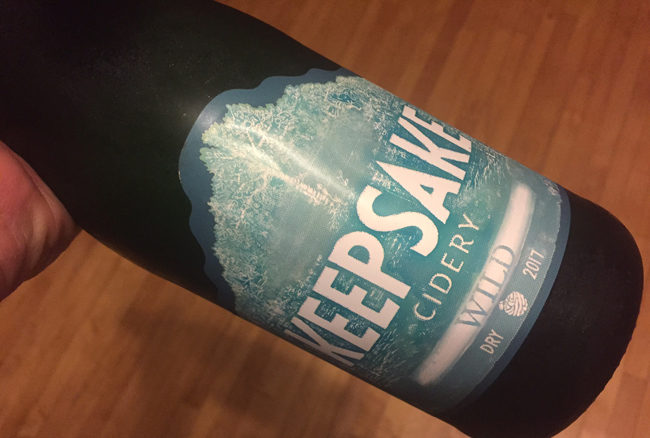
A yeasty nose leads into Keepsake Cidery Wild Dry 2017, which combines an almost gingerbreadlike spiciness with a neat, dry, tart finish.
Sponsel’s Minnesota Harvest Cranberry Tart is so cranberry forward and so tart, with an aggressive finish, that the apple flavor gets lost in the shuffle. Sponsel’s flagship cider is balanced and classic in its profile.
No. 12 Cider House‘s Sparkling Dry Cider starts with a complex, layered nose and emerges from the glass restrained, elegant, and balanced.

We tried three varieties of Yellow Belly ciders from Sapsucker Farms. The flagship variety is sweet but not cloying, with a moist body and just a hint of tartness. It’s a great everyday hard cider. The Barrel Aged variety is drier and considerably earthier, with a neat, clean finish. The Ginger variety incorporates an aggressive but balanced bite that dominates the cider’s profile without annihilating the apple character of the drink. It finishes sharply, and would pair beautifully with spicy food.
Falconer Vineyards Lumberjack Hopped cider is so affable and cheerfully juicy that the hops get lost in the shuffle, but the resulting beverage is easy to drink and would be easy to pair with food, too. The non-hopped version of the drink sports a tart apple edge but lacks depth.
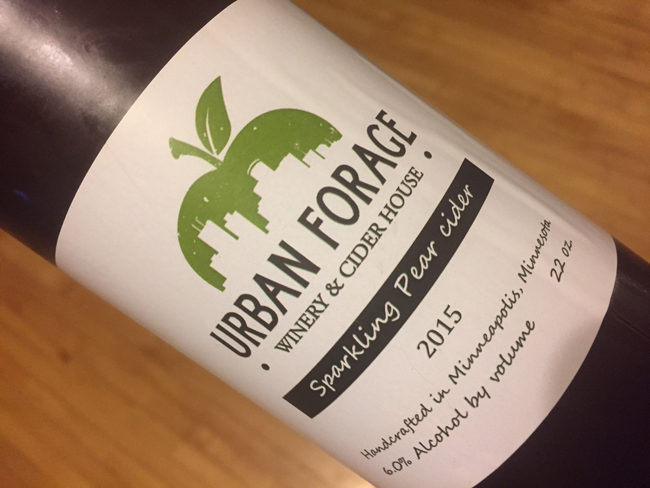
Urban Forage Sparkling Pear cider is bold, earthy, full-boded, and ultimately beautiful, with a lush, full finish. Urban Forage’s Gin Botanical cider is funky, piney, resinous, and earthy. The flavor explodes from the glass, and it’s going to be divisive — it’s a pungent kick of complexity.
Wyndfall Cyder‘s Driftless Dry is light and balanced, starting and ending with a gently sweet, floral flavor of apple.
Brut Hard Cider Fully Dry by Hoch Orchard and Gardens is dry but not excessively so, with a mellow body and a clean finish. Hoch’s Wild Haralson is flinty and funky with hints of gunpowder. The Dry Hopped Semi-Dry is the best of the bunch, tasting like a happy compromise between an apple-forward hard cider and a soft-spoken pale ale.
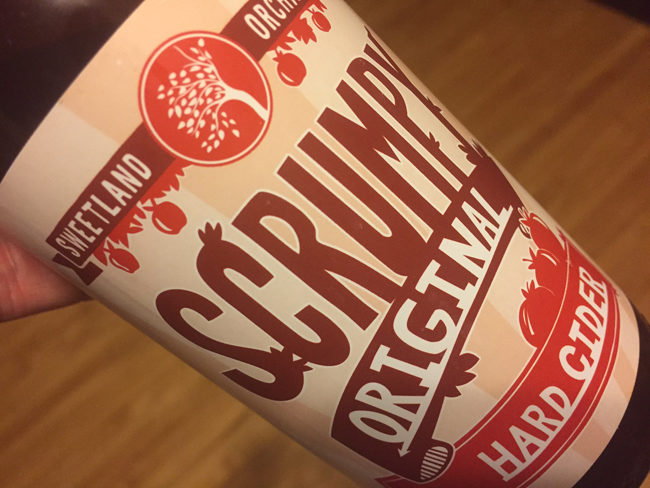
Scrumpy Original by Sweetland Orchard offers drinkers a snootfull of honey and flowers wrapped around a light body. Cherry-Rhubarb Scrumpy complicates the beverage without overwhelming it, sharing cherry, rhubarb, honey, and apple in equal portions.
The interview was lightly edited for clarity.

